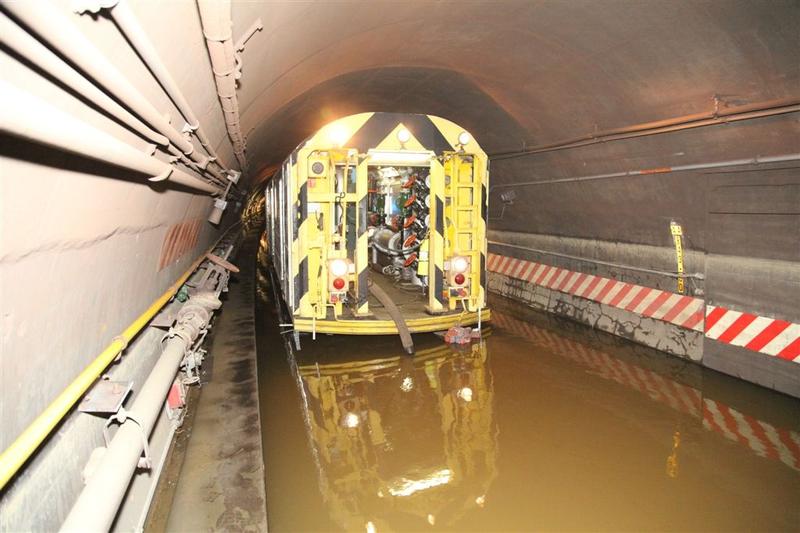 Transportation Nation
Transportation Nation
Published by
Transportation Nation
In Case of Hurricane, Take the R or the G Lines to Work

The New York Metropolitan Transportation Authority sustained $4.7 billion in damage after Sandy — two years ago to the day this Wednesday. And it will take much more than that to protect the nation's busiest transit system from another mega-storm.
Here are some highlights of what's been done so far:
- A seven-foot-tall steel wall has been installed along the A line tracks across Broad Channel, to prevent another washout that stranded Rockaway commuters for months after Sandy.
- The tunnels carrying the R line under the East River and the G line under Newtown Creek are theoretically flood-proof; electrical substations were sealed; openings, such as hatches and manhole coverings were plugged; cables were encased in watertight ducts.
- Since some of the water that infiltrated the R tunnel came through the South Ferry Station in Lower Manhattan, the MTA built a steel door to seal the station off from the tunnel in case of flooding.
But the MTA still has seven other East River tunnels to secure. It is currently working on the Steinway Tunnel, which carries the No. 7 line between Midtown and Queens, and has said it would embark on the Cranberry Tunnel (the A and C lines) next. In addition, some 540 openings in Lower Manhattan, such as subway entrances, will need to be covered in the days or hours leading up to a major storm to prevent another catastrophe.